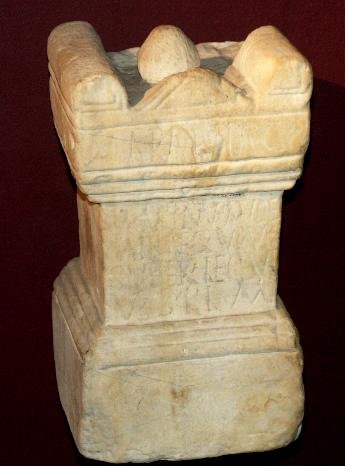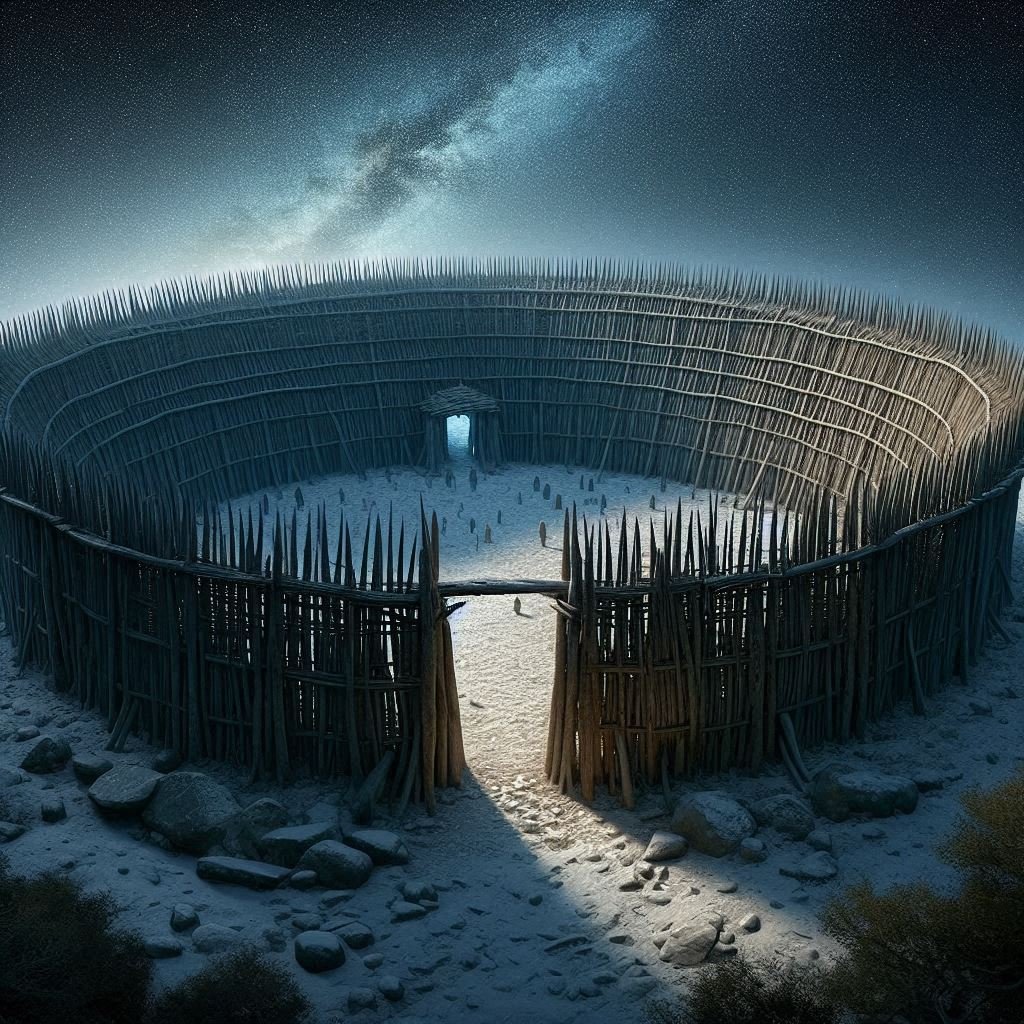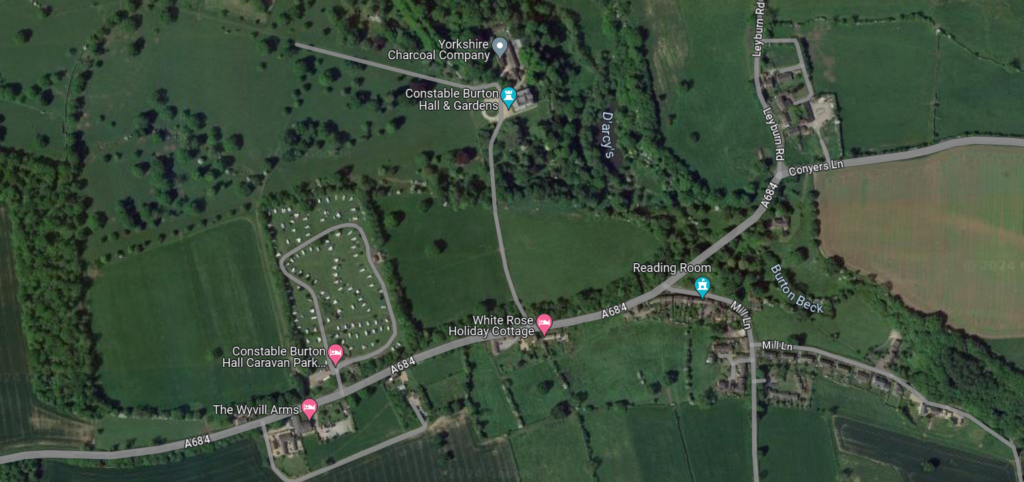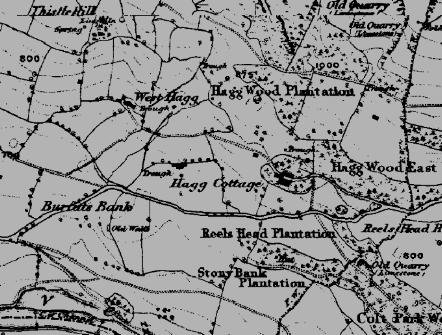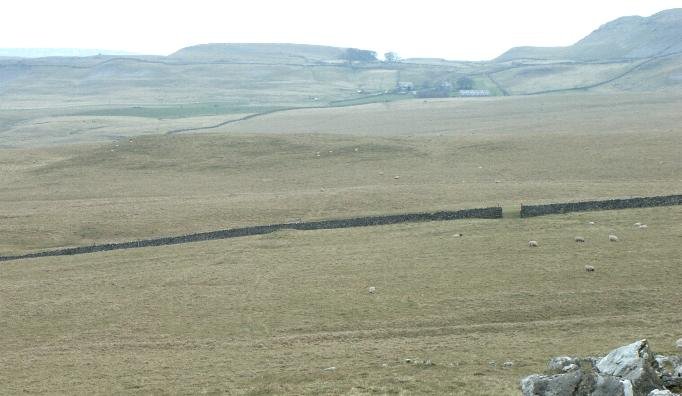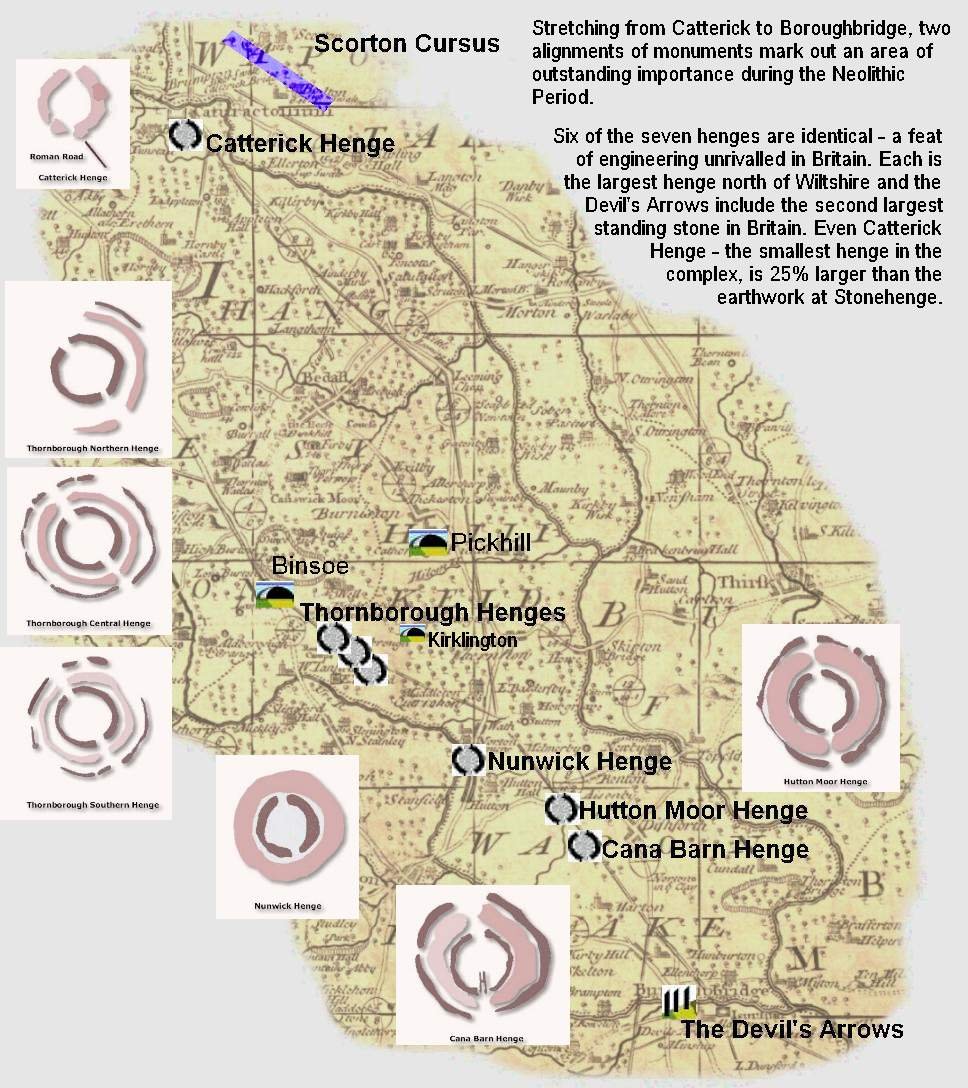Contents
- 1 Linked Documents
- 2 Tor Dyke
- 3 Castle Dykes Roman Villa
- 4 Newton Kyme Henge
- 5 Nunwick Henge
- 6 Penhill Preceptory – Chapel of the Knights Templar
- 7 Castle Steads Hill Fort
- 8 Catterick Henge
- 9 Catterick Roman Marching Camp
- 10 Catterick Roman Fort
- 11 Cleave Dyke Defensive System
- 12 Devil’s Arrows
- 13 Grinton Lodge Earthworks
- 14 Eboracum, York
- 15 Earthworks at Manor Grange Wensleydale
- 16 Carperby in Wensleydale
- 17 Marrick Priory
- 18 Earthworks at Paradigm Sharpening, Nelholme, Wensleydale
- 19 Ellerton Abbey
- 20 Bolton Hall, Wensleydale
- 21 St Michael and All Angels Church, Hubberholme
- 22 Earthworks at Stainton
- 23 Polly Peachums Tower, Wensleydale
- 24 Earthworks at Walburn Hall Farm, Richmond
- 25 Motte and Bailey – Northallerton
- 26 How Hill Hillfort
- 27 Aldborough Hall, North Yorkshire
- 28 St Michael & All Angels, Downholme
- 29 St John the Baptist Church Kirby Wiske
- 30 Cana Barn Henge
- 31 The Temple Folly – Wensleydale
- 32 Ingleton – Yorkshire Dales
- 33 Ingleborough Hill – Yorkshire Dales
- 34 St Michael’s Church Kirklington
- 35 Marne Barracks Neolithic palisaded enclosure
- 36 Maidens Grave – Burton Fleming, North Yorkshire
- 37 Earthwork 300m East of the Entrance to Swinton Castle
- 38 John O’Gaunt’s Castle and Beaver Dyke – Harrogate
- 39 Malham Roman Camp, North Yorkshire
- 40 Earthworks at Bellerby, Leyburn
- 41 Earthworks at Redmire
- 42 Bowbridge Lane Late Bronze Age burial site, Catterick
- 43 Castle Bolton
- 44 Castle Dykes Henge, Thoralby – North Yorkshire
- 45 St John the Baptist Church Stanwick
- 46 Earthworks at the top of Holly Hill, Well
- 47 Cobscar Smelting Mill Chimney, Redmire, Wensleydale
- 48 St Cuthberts Church Forcett
- 49 Scotts Dyke – Richmond
- 50 Boltby Scar Iron Age Hill Fort
- 51 Braithwaite Wood Fort, East Witton
- 52 The Rocket, Pepperpot and Gate Follies and sorrounding earthworks – West Witton
- 53 Sinderby Henge
- 54 Snape Castle
- 55 Rudston Standing Stone
- 56 All Saints Church Rudston
- 57 Constable Burton
- 58 Maiden Castle Fort Reeth
- 59 Stanwick Hill Fort
- 60 Scorton Cursus
- 61 Roulston Scar Hill Fort
- 62 Staple Howe West Hesterton
- 63 Fremington Hagg
- 64 Hutton Moor Henge
- 65 Kilgram Bridge Ford
- 66 Richmond, North Yorkshire
- 67 Bainbridge Camp – Hill Fort
- 68 Kirklington Tumulus
- 69 Live Moor Hill Fort
- 70 Malham Roman Marching Camp
- 71 Bainbridge Roman Fort
- 72 Near Moor
- 73 Pickhill Mound
- 74 Thornborough Henges
- 75 Site Gallery
Linked Documents
Tor Dyke
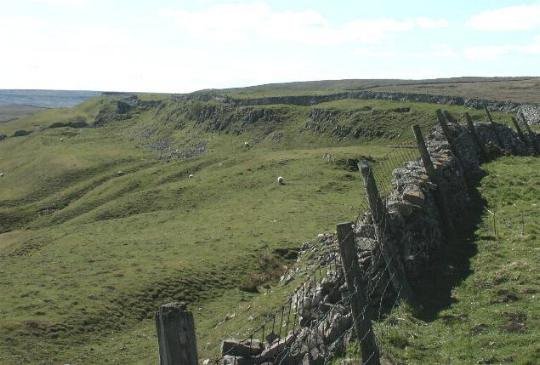
Tor Dyke appears to have been attributed to Venutius which dates it of the period AD 52 - 70. The presence of a legionary size marching camp a few miles to the southwest at Malham certainly indicates an active role in the Roman advance of AD 70. However, given the lack of published research so...
Castle Dykes Roman Villa

This earthwork was partially excavated in 1870, these revealed the foundations for a Roman villa of obvious opulence. It's final Roman owners were believed to have suffered a grisly death as the villa burnt around them. It is likely that future excavations will reveal that the villa was built over of an earlier tribal centre....
Newton Kyme Henge

Newton Kyme hosts the site for what was once a 200m henge of the Thornborough variety.
Nunwick Henge
A henge at Nunwick visible both as a low bank and shallow internal ditch and as a cropmark. A berm was originally present between ditch and bank.
Penhill Preceptory – Chapel of the Knights Templar
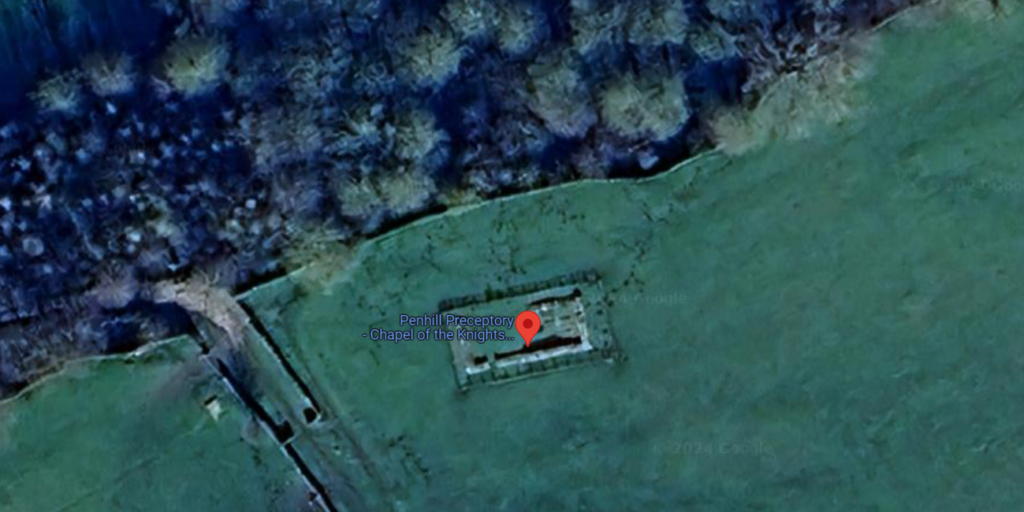
The history of Penhill Preceptory is closely tied to the dramatic rise and fall of the Knights Templar. The order was initially founded to protect Christian pilgrims travelling to the Holy Land, but over time, they amassed great wealth and influence, which eventually led to their downfall.
Castle Steads Hill Fort
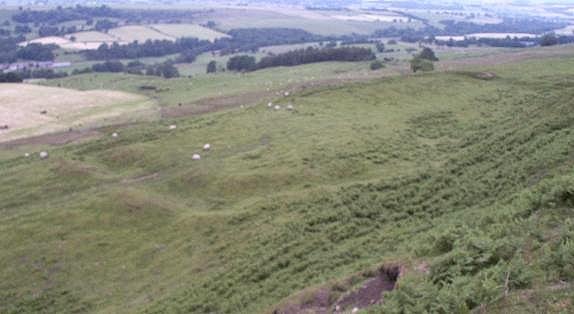
Castle Steads is a Hill-Side Enclosure, seemingly built without worry of threat from the upper slopes of the hill it is built on.
Catterick Henge
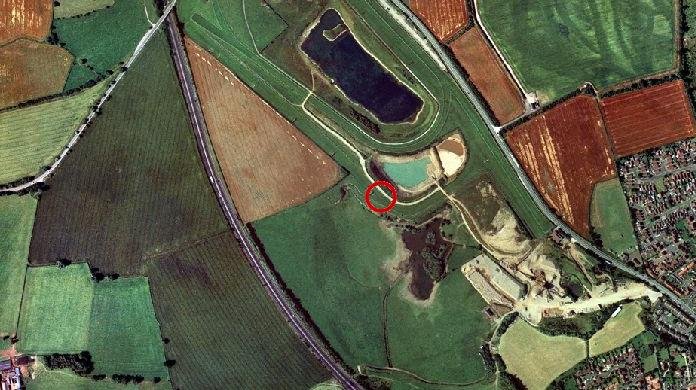
The henge at Catterick racecourse is an intriguing prehistoric site. Initially thought to be a Roman amphitheatre, it is now believed to be a henge, a type of Neolithic earthwork.
Catterick Roman Marching Camp

Discovered only recently by air survey and geophysics, this camp lies on the alluvial plain of the River Swale, on the south bank of the river just north-east of Catterick racecourse. The camp lies some 350m to the west of Dere Street.
Catterick Roman Fort

The Fort at Catterick. It has an unusual shape due to multiple fort plans being overlaid on it. Originally, it was a Roman fort, but a settlement soon sprang up outside the fort, which soon dominated the fort, and Catterick became one of the most important 'Small towns' in the north of Britain.
Cleave Dyke Defensive System

The Cleave dyke system is several Dykes which combine to create a boundary of between 9 and 18 kilometres running north south to the west of Thirsk.
Devil’s Arrows
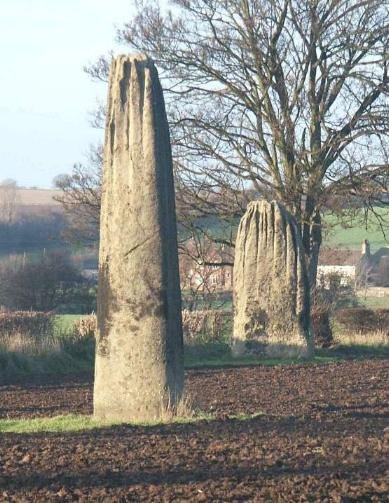
This Bronze Age site comprises of three large standing stones, it is thought originally there were as many as five stones in this alignment. Being Bronze Age little is known about the origin of the Devil's Arrows, the name reflecting a more recent myth. The monument is strongly linked with an alignment with several others...
Grinton Lodge Earthworks

The earthworks that sit on the hillside between Grinton Lodge and the B6270 are part of a fascinating archaeological landscape in North Yorkshire. These features are distinct from the nearby Grinton-Fremington Dyke System, which dates back to the post-Roman period and is believed to have formed part of the boundary of an early British kingdom.
Earthworks at Manor Grange Wensleydale
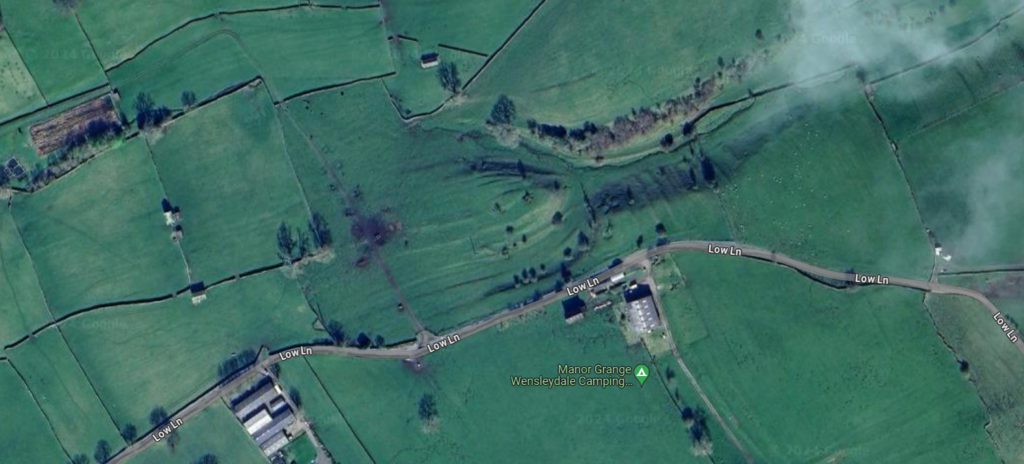
The Earthworks at Manor Grange in Wensleydale are a testament to the rich historical tapestry of the Yorkshire Dales.
Carperby in Wensleydale

Carperby, nestled in the heart of Wensleydale, North Yorkshire, is a village steeped in history and archaeological significance.
Marrick Priory
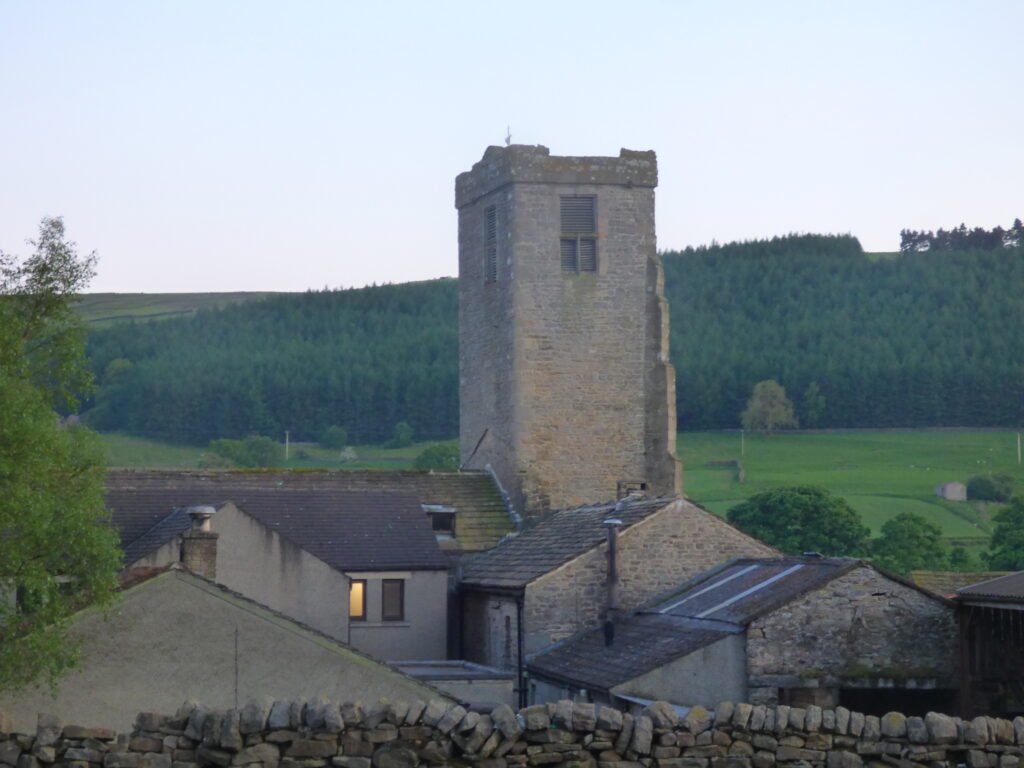
Marrick Priory, a historic gem nestled in the Yorkshire Dales, has a rich history that dates back to the 12th century.
Earthworks at Paradigm Sharpening, Nelholme, Wensleydale
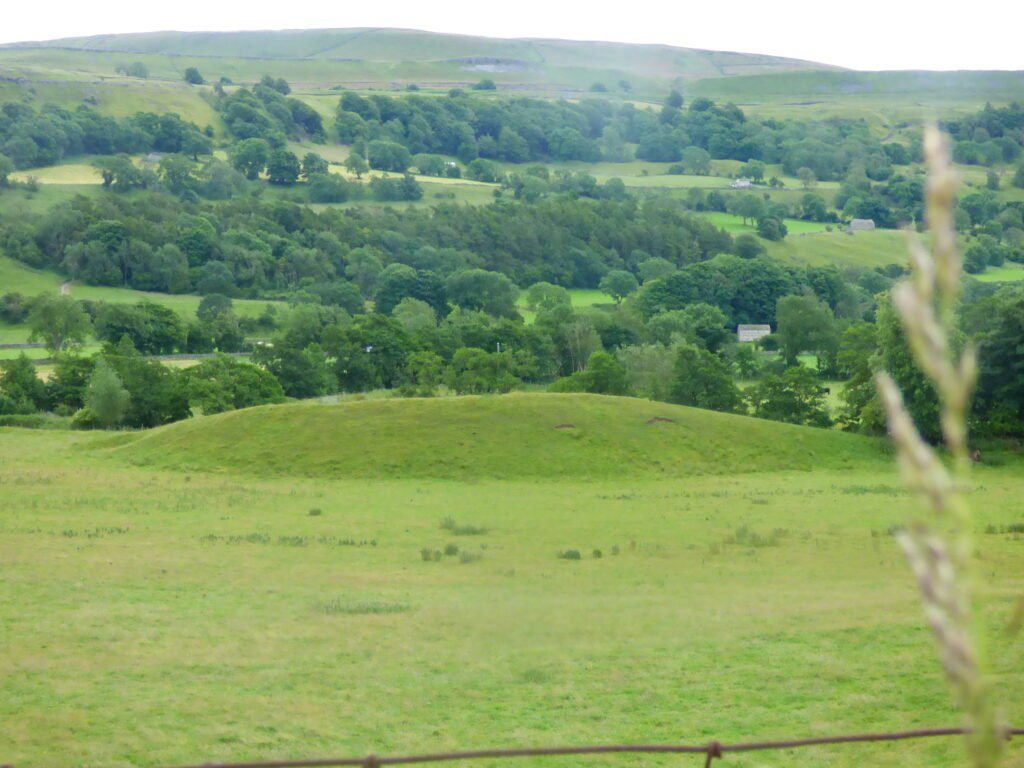
In the grounds of Paradigm Sharpening, Nelholme, West Burton, on both sides of the roads are what looks like two natural amphitheatres, which may have been enhanced by the local people are used as a meeting place. I can't find any research on this location, but it is of sufficient interest to record.
Ellerton Abbey
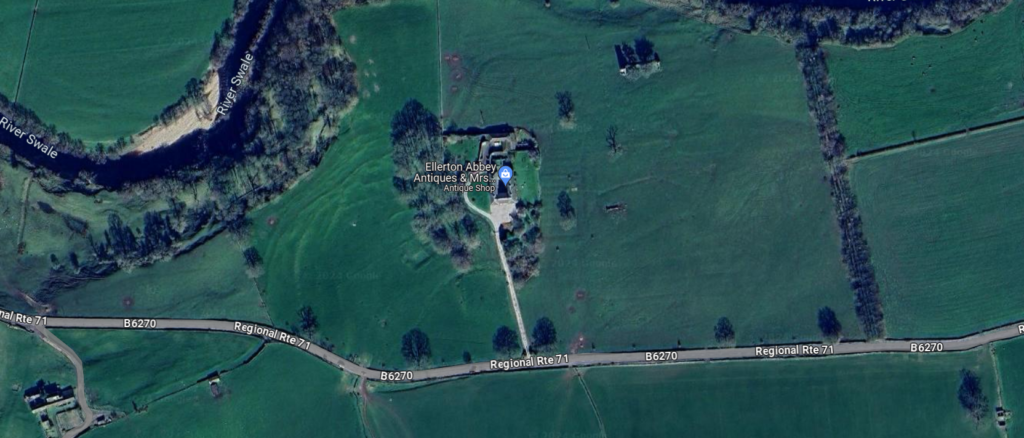
Ellerton Abbey, nestled in the picturesque landscape of North Yorkshire, holds a rich tapestry of history that intertwines with the broader narratives of England's past.
Bolton Hall, Wensleydale
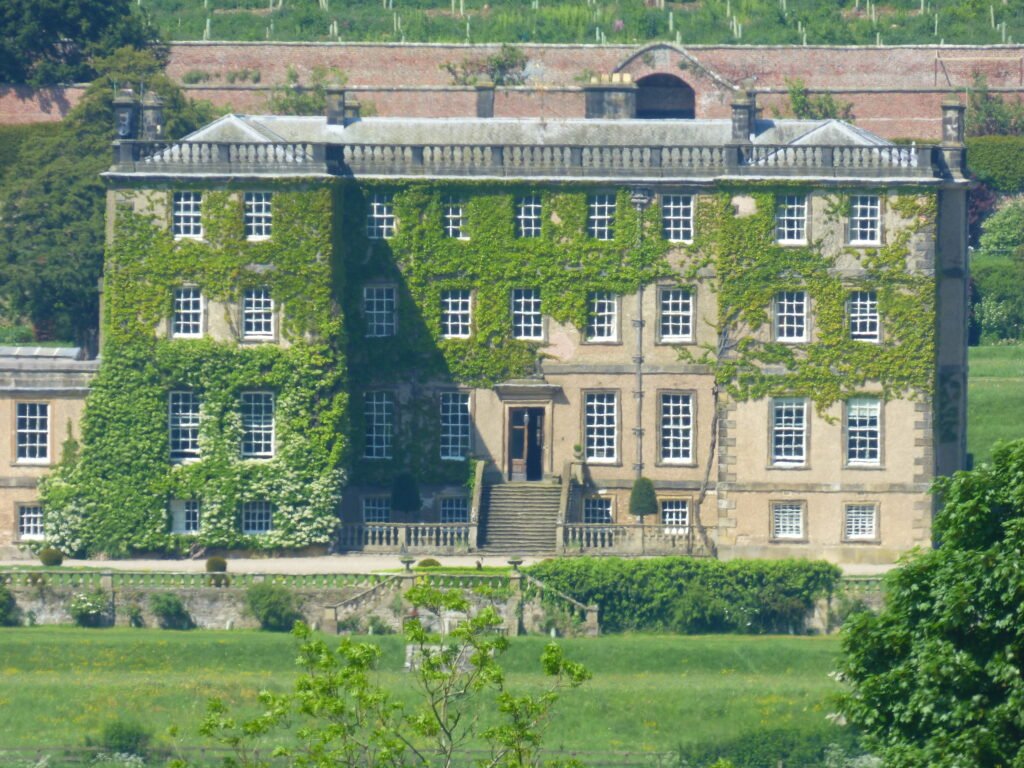
Bolton Hall, a stately country house in the Yorkshire Dales, has a rich history that intertwines with the broader narrative of the region. The current Bolton Hall was constructed in the late 17th century, specifically in 1678, for Charles Paulet, the 1st Duke of Bolton, as a reward from King William III for his support...
St Michael and All Angels Church, Hubberholme
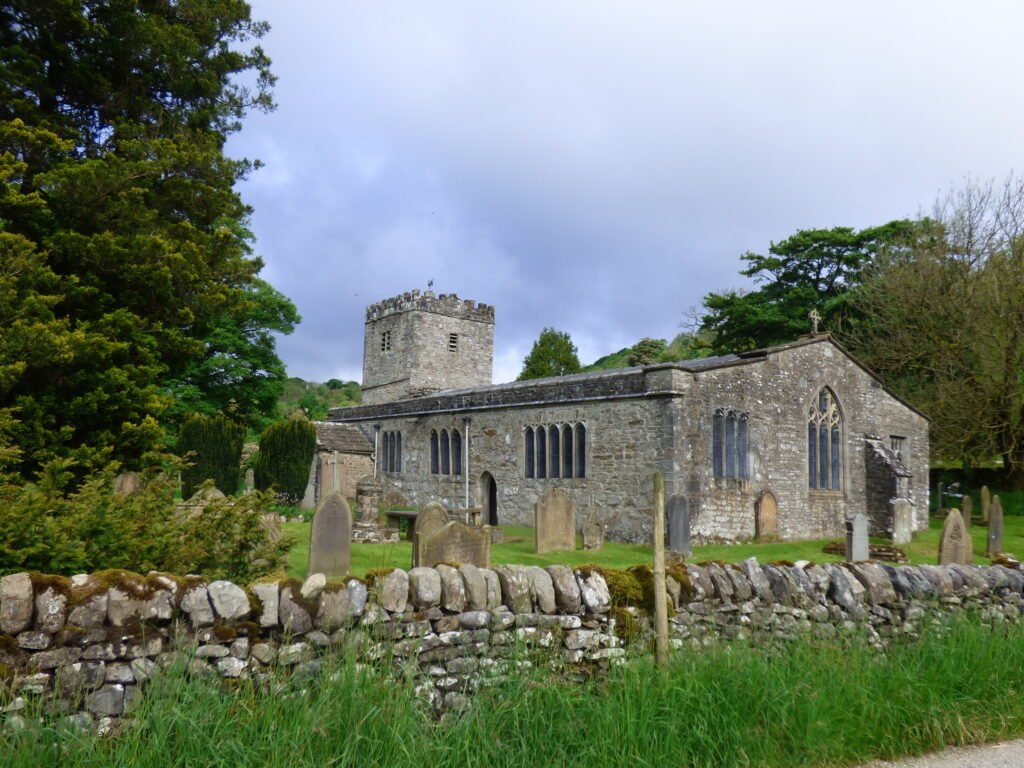
St Michael & All Angels Church, nestled in the serene setting of Hubberholme in North Yorkshire, is a historical gem dating back to the 12th century.
Earthworks at Stainton
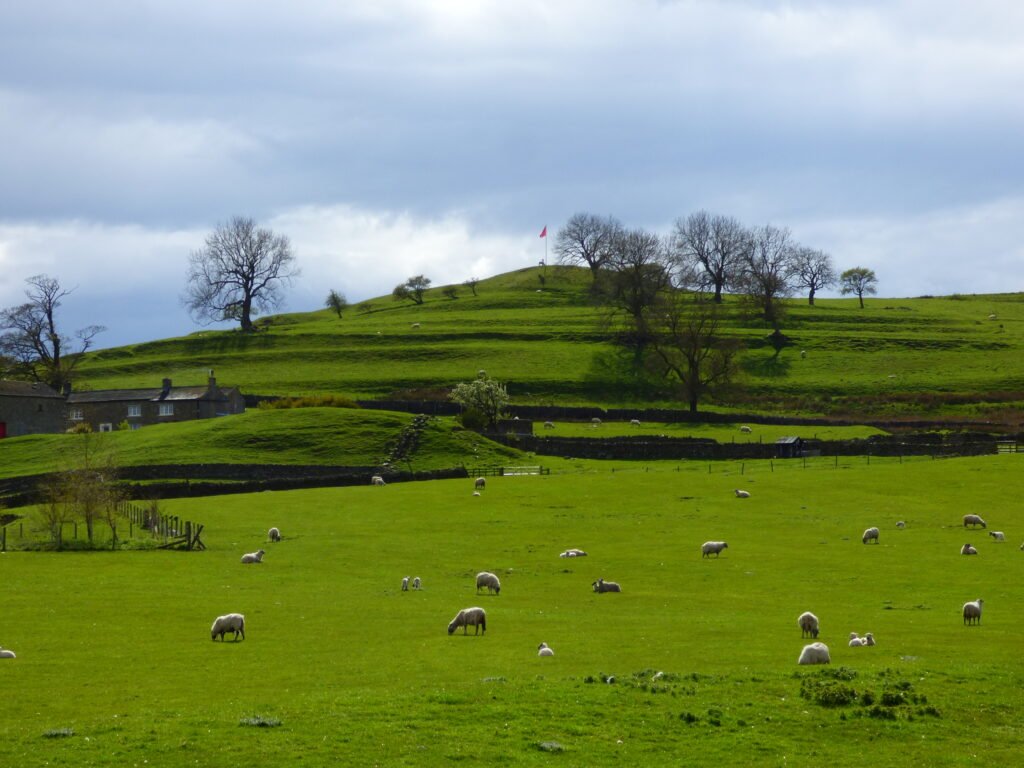
The earthworks surrounding Stainton in North Yorkshire are part of a rich archaeological tapestry that speaks to the region's ancient past. These structures are believed to be remnants of extensive field systems, possibly dating back to the post-Roman period.
Polly Peachums Tower, Wensleydale
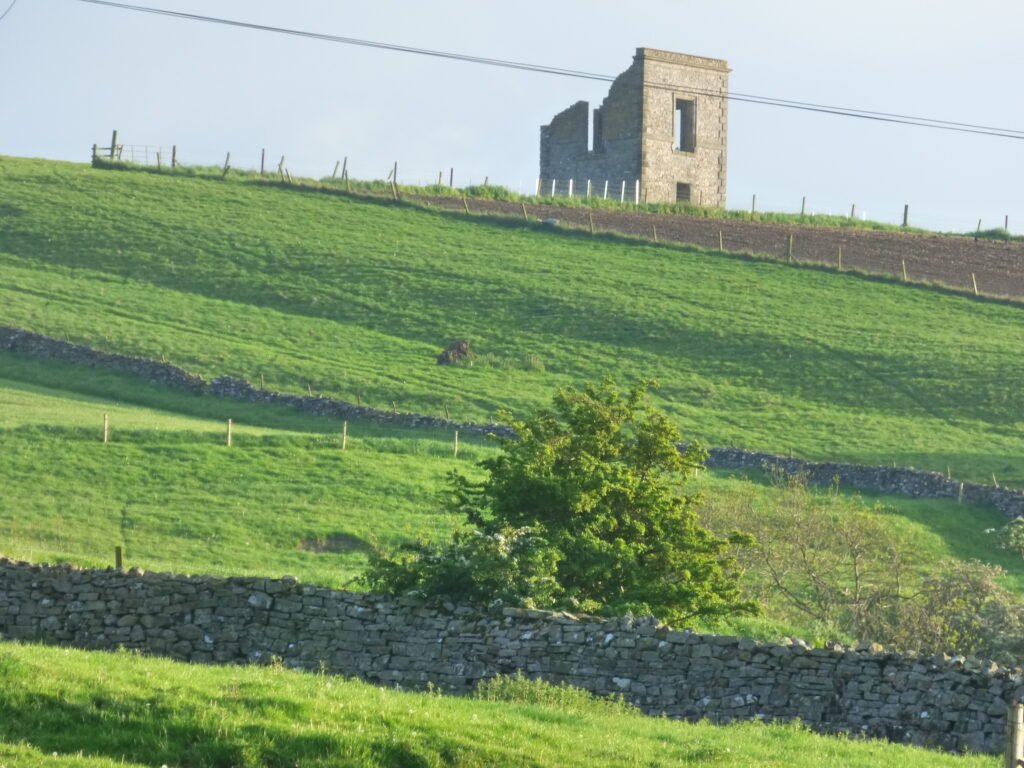
Polly Peachum's Tower, also known as The Mount, is a structure steeped in history and nestled in the scenic beauty of the Yorkshire Dales. This Grade II listed building, dating back to the 17th or early 18th century, was originally a hunting tower before it became associated with the character Polly Peachum.
Earthworks at Walburn Hall Farm, Richmond
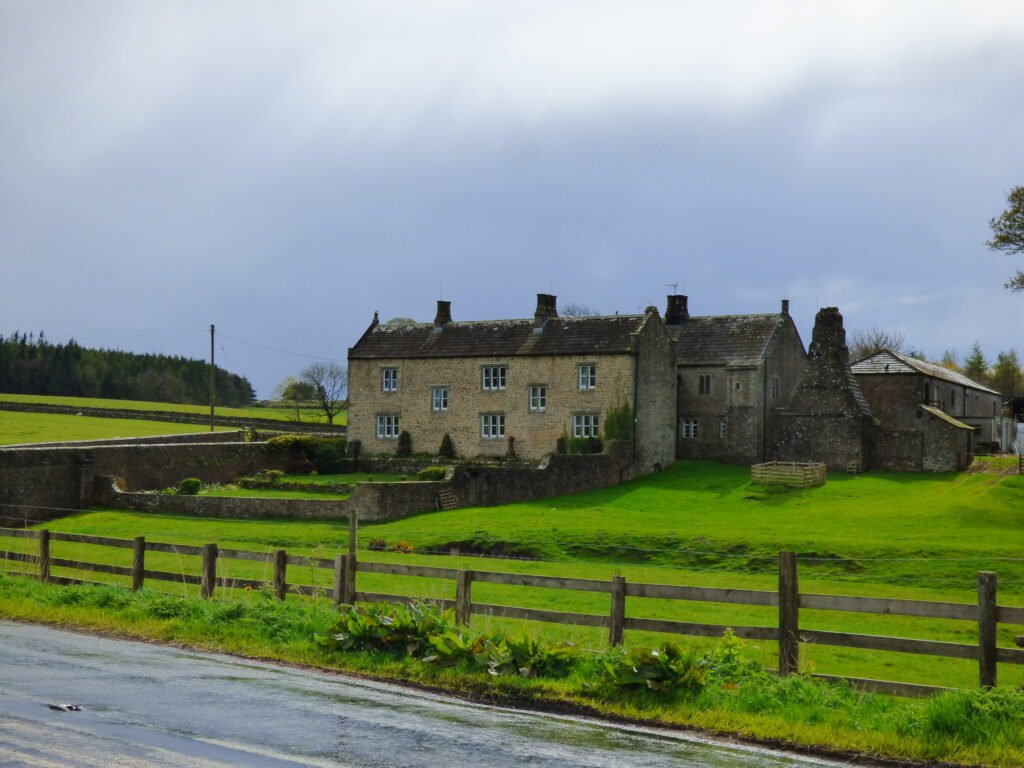
The Earthworks at Walburn Hall Farm in Richmond are a testament to the area's rich historical tapestry, dating back to medieval times.
Motte and Bailey – Northallerton
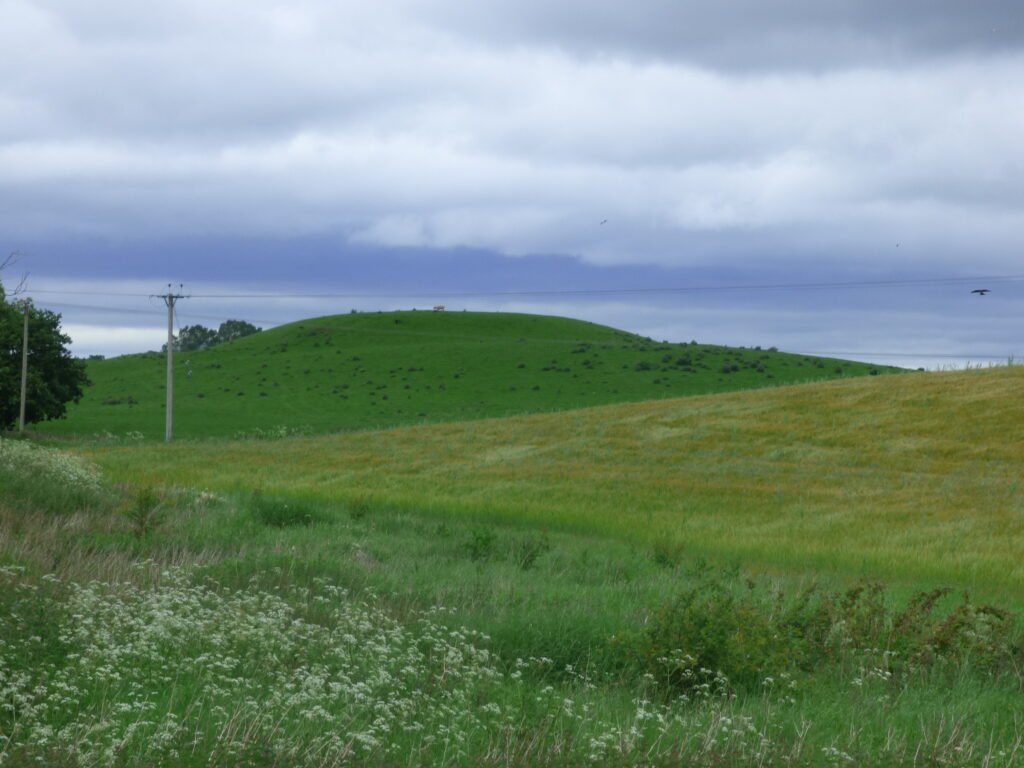
The motte and bailey in Northallerton hold a significant place in English history, being a prime example of early medieval fortifications in the country. The site is known to have been the location of a bishop's palace, serving as a testament to the ecclesiastical power and influence in the region.
How Hill Hillfort
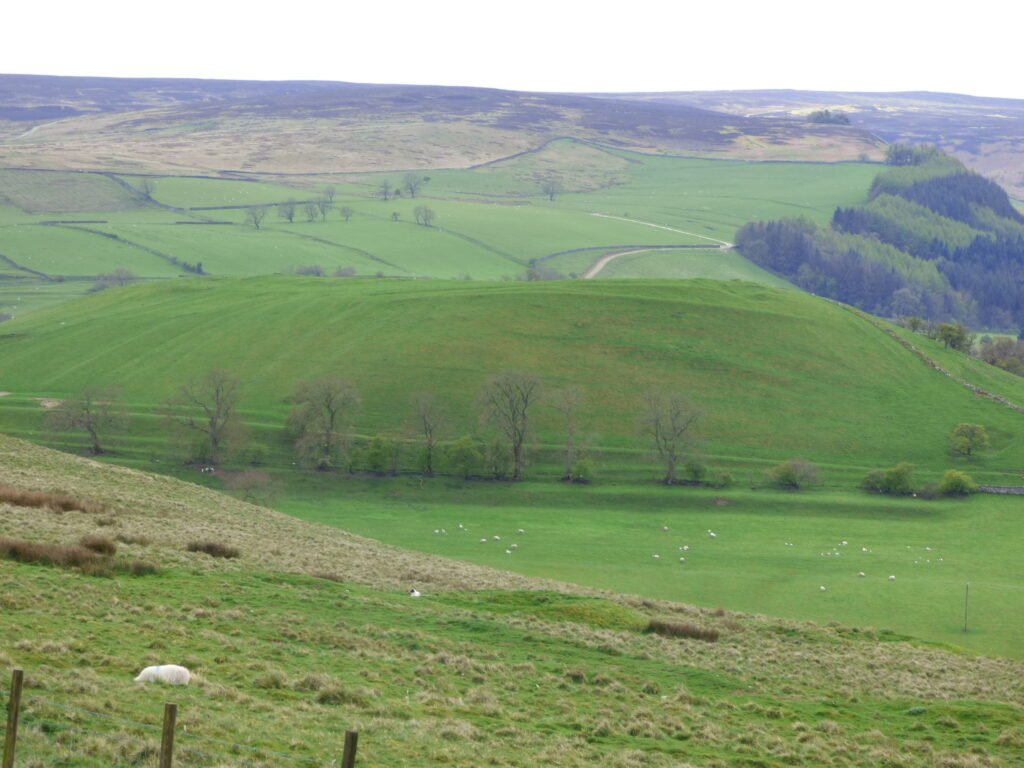
How Hill, near Downholme in North Yorkshire, is the site of a large univallate hillfort.
Aldborough Hall, North Yorkshire
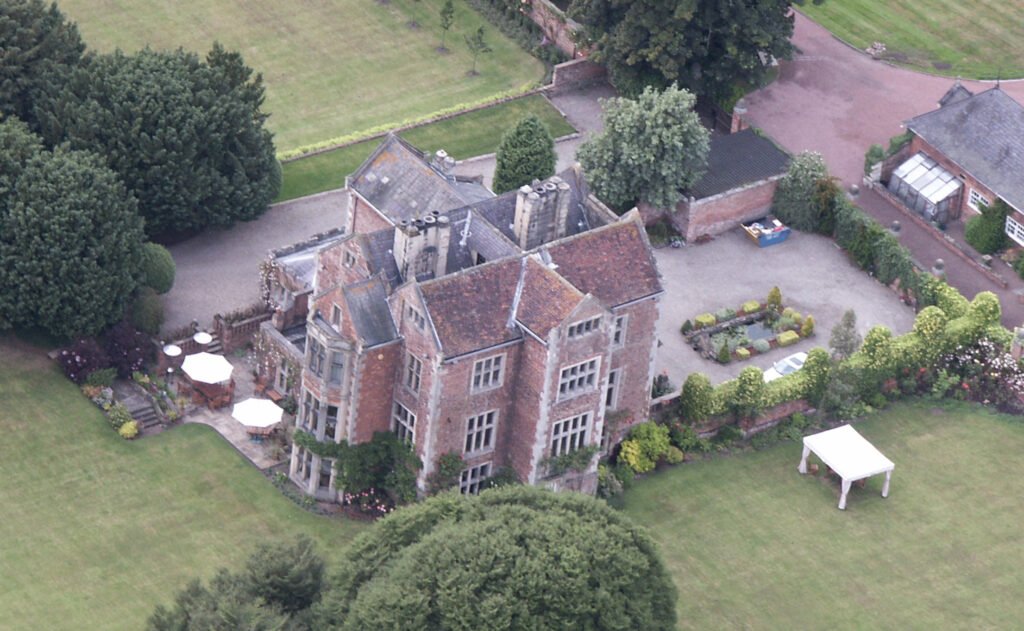
Aldborough Hall, nestled in the picturesque village of Aldborough in North Yorkshire, England, is a testament to architectural evolution and historical significance. The origins of the hall can be traced back to the early 17th century
St Michael & All Angels, Downholme
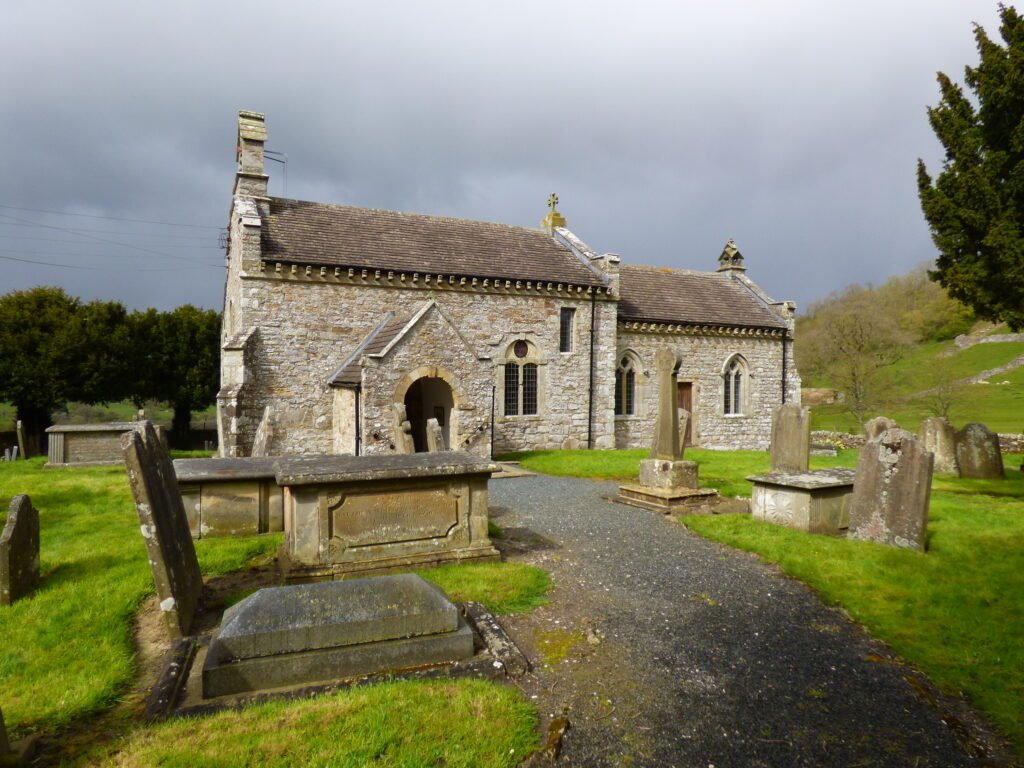
The history of St Michael & All Angels in Downholme is woven through the centuries.
St John the Baptist Church Kirby Wiske
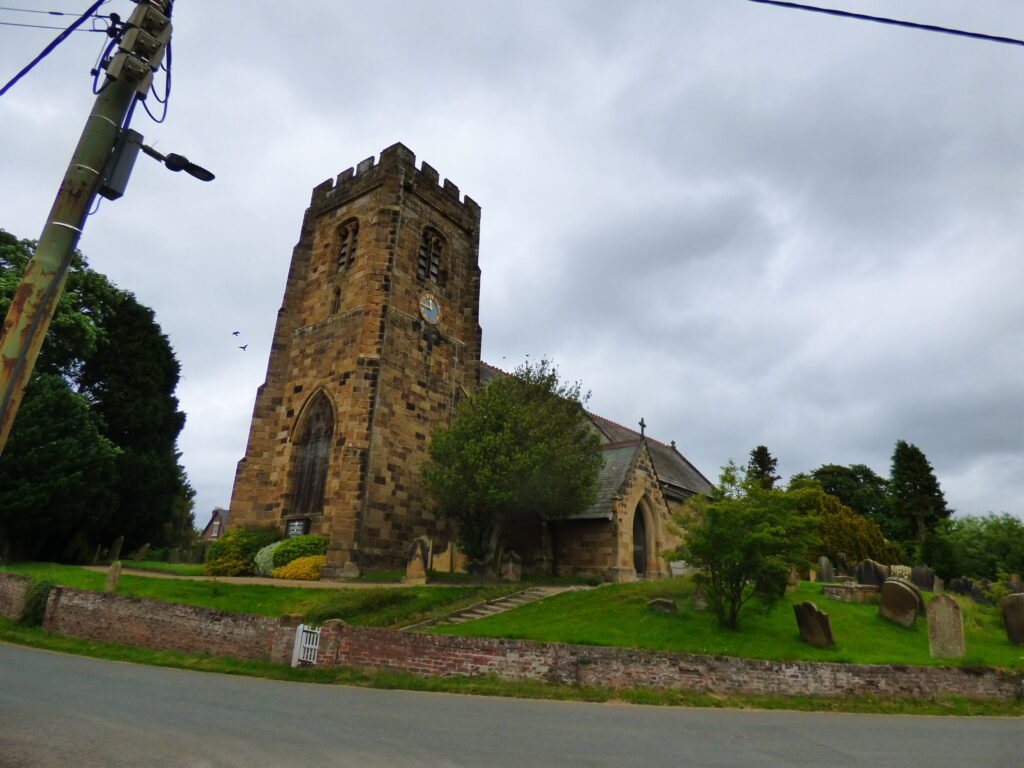
St John the Baptist Church in Kirby Wiske, North Yorkshire, is a historical edifice with roots stretching back to the 12th century. This Grade II* listed parish church, as recognized by Historic England, showcases architectural additions from the 14th and 15th centuries, reflecting the evolving styles and ecclesiastical needs of the period.
The Temple Folly – Wensleydale
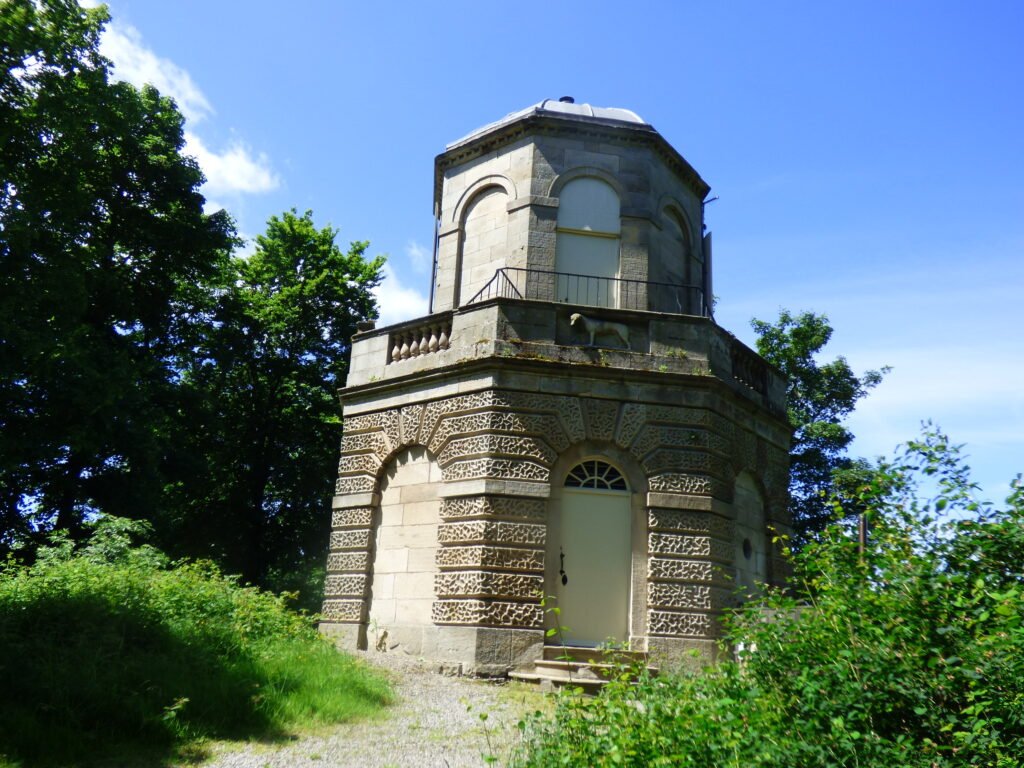
The Temple Folly, an 18th-century Grade II listed structure, stands as a testament to the architectural whimsy of the period. Nestled in the Yorkshire Dales National Park, this folly is situated on the north side of the road from Leyburn to Hawes, near West Witton.
Ingleton – Yorkshire Dales
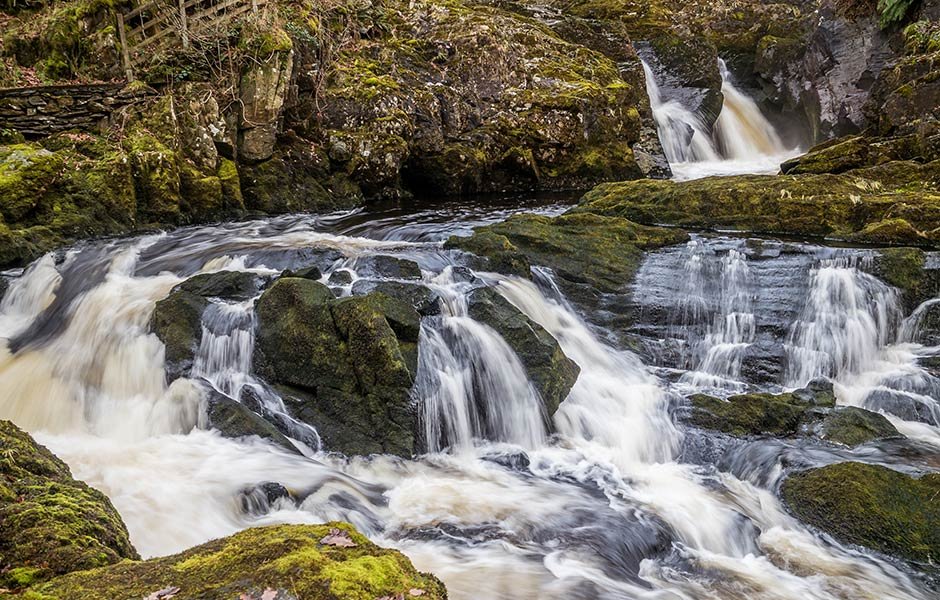
Ingleton, located in North Yorkshire, England, has a rich and diverse history that spans thousands of years. The village is situated in the scenic area of the Yorkshire Dales, which has long been inhabited and influenced by a variety of cultures.
Ingleborough Hill – Yorkshire Dales

Ingleborough Hill, part of the Yorkshire Dales National Park, is one of the famous "Three Peaks" in the area, alongside Whernside and Pen-y-ghent. It stands at 723 meters (2,372 feet) and has a rich geological and archaeological history.
St Michael’s Church Kirklington
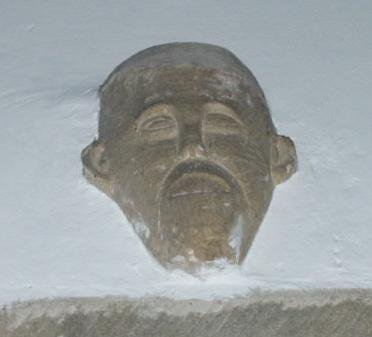
St Michael's Church at Kirklington stems from prior to the Norman Period and has ghosts of an even earlier period in the form of the various carved heads found inside and outside the church.
Maidens Grave – Burton Fleming, North Yorkshire
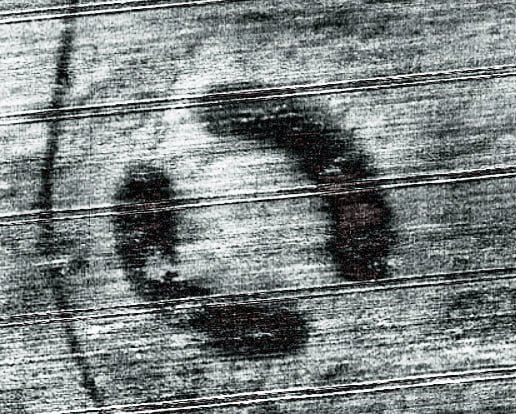
A henge located north of Rudston,The henge was discovered as a cropmark on an aerial photograph in the early 1960s, although subsequent field investigation showed it to survive as an earthwork, albeit badly plough-damaged.
Earthwork 300m East of the Entrance to Swinton Castle
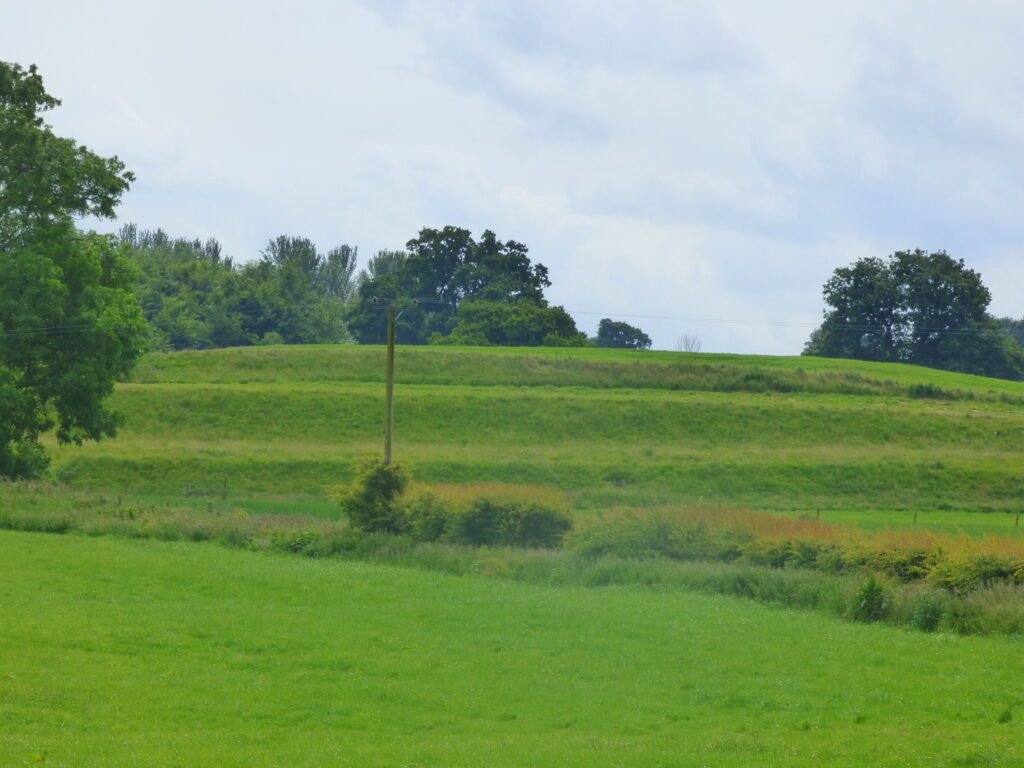
There is an earwork, approximately 300m east of the entrance to swinton castle. It is a small elongated hill, with three terraces on either side of it. It sit along in the landscape as such a feature, and the terraces seem impractactacle and redundant for crops in what is otherwise a flat landscape. It looks...
John O’Gaunt’s Castle and Beaver Dyke – Harrogate
John O'Gaunt's Castle, located near Harrogate in North Yorkshire, is a historical site with roots that intertwine myth, history, and medieval legend.
Earthworks at Bellerby, Leyburn
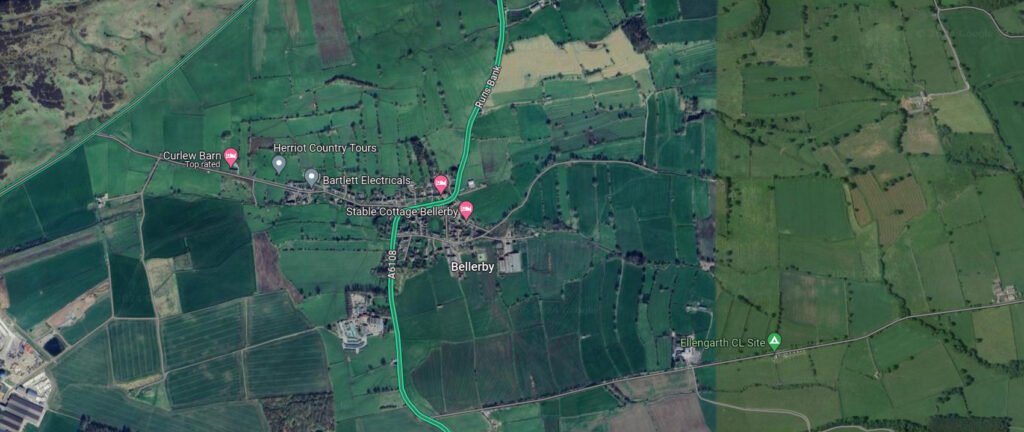
Bellerby, a charming village nestled in the heart of North Yorkshire, England, boasts a rich tapestry of history that dates back to the Domesday Book of 1086, where it was recorded as "Belgebi" – a name derived from Old Norse, meaning "Berg's farmstead or clearing."
Earthworks at Redmire
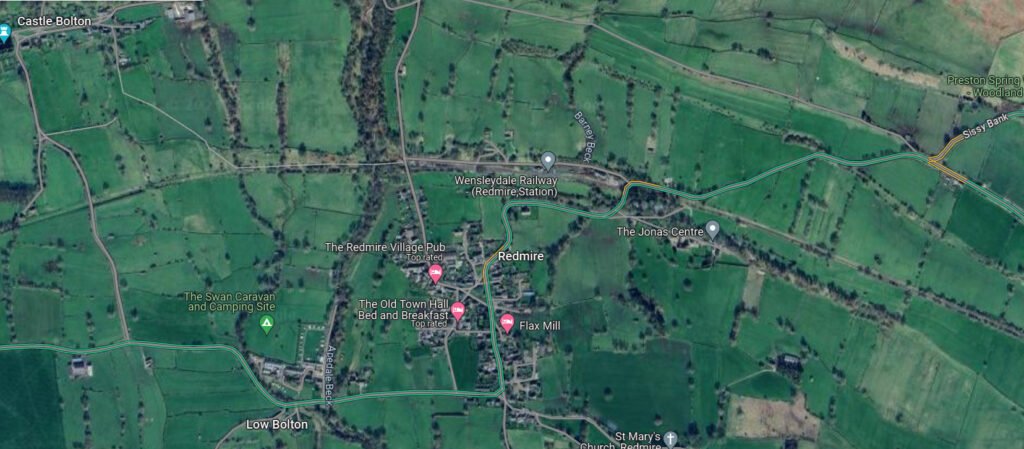
Redmire, a charming village nestled in the heart of North Yorkshire, England, boasts a rich tapestry of history that is as picturesque as its serene landscapes.
Bowbridge Lane Late Bronze Age burial site, Catterick
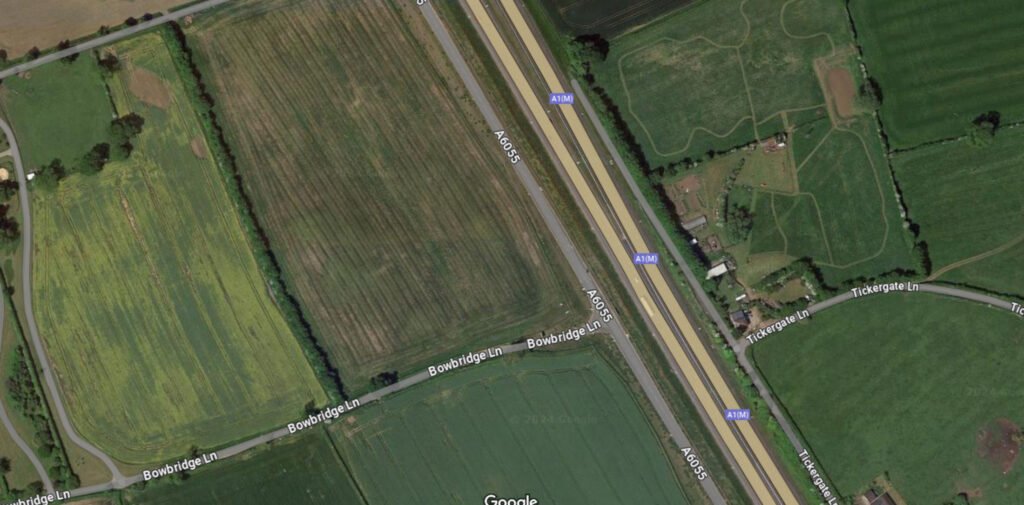
The excavation on the northern side of Bowbridge Lane as part of the A1 expansion revealed a significant archaeological site, with features indicative of Late Bronze Age funerary practices.
Castle Bolton
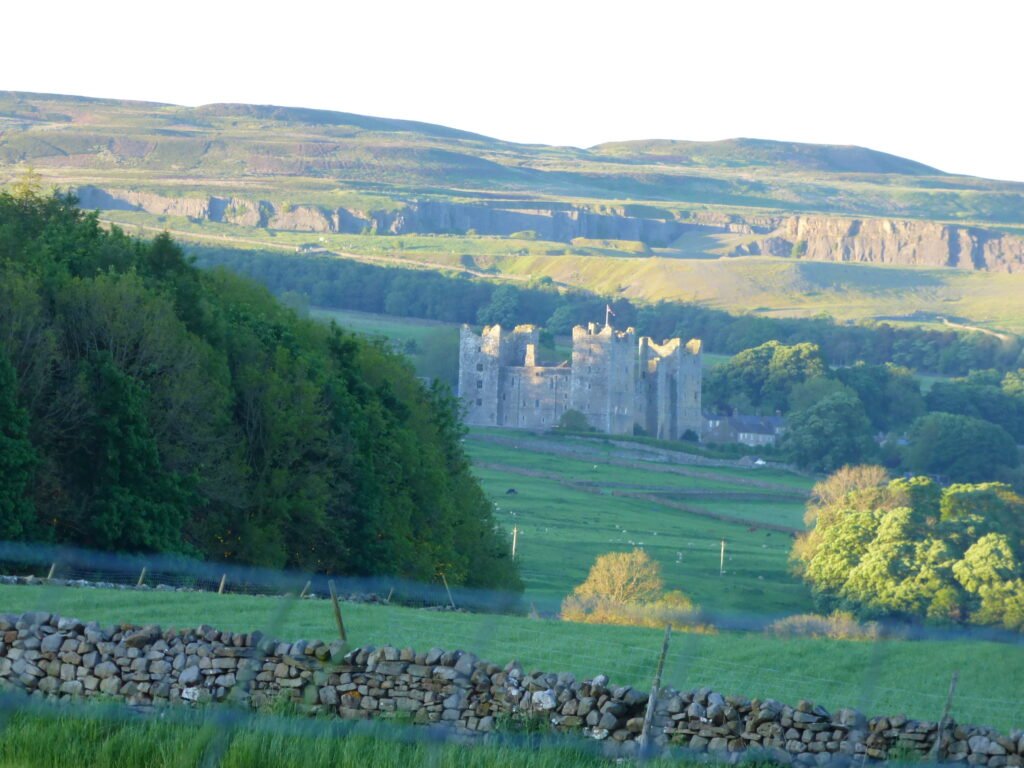
Bolton Castle, an ancient fortress located in the heart of Wensleydale, Yorkshire, stands as a testament to medieval architecture and the Scrope family's legacy.
Castle Dykes Henge, Thoralby – North Yorkshire
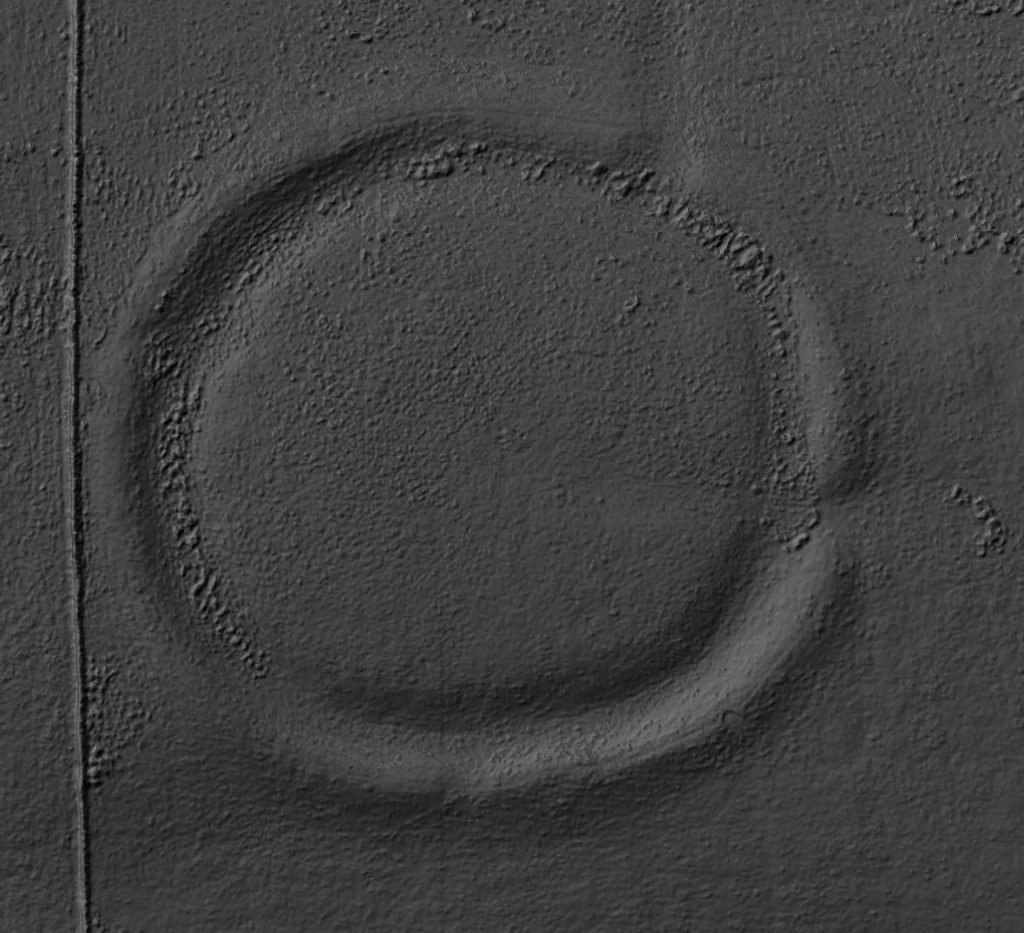
Castle dykes it is a small class one henge, only 90m across, perched on the high ground up in the North Yorkshire dales.
St John the Baptist Church Stanwick
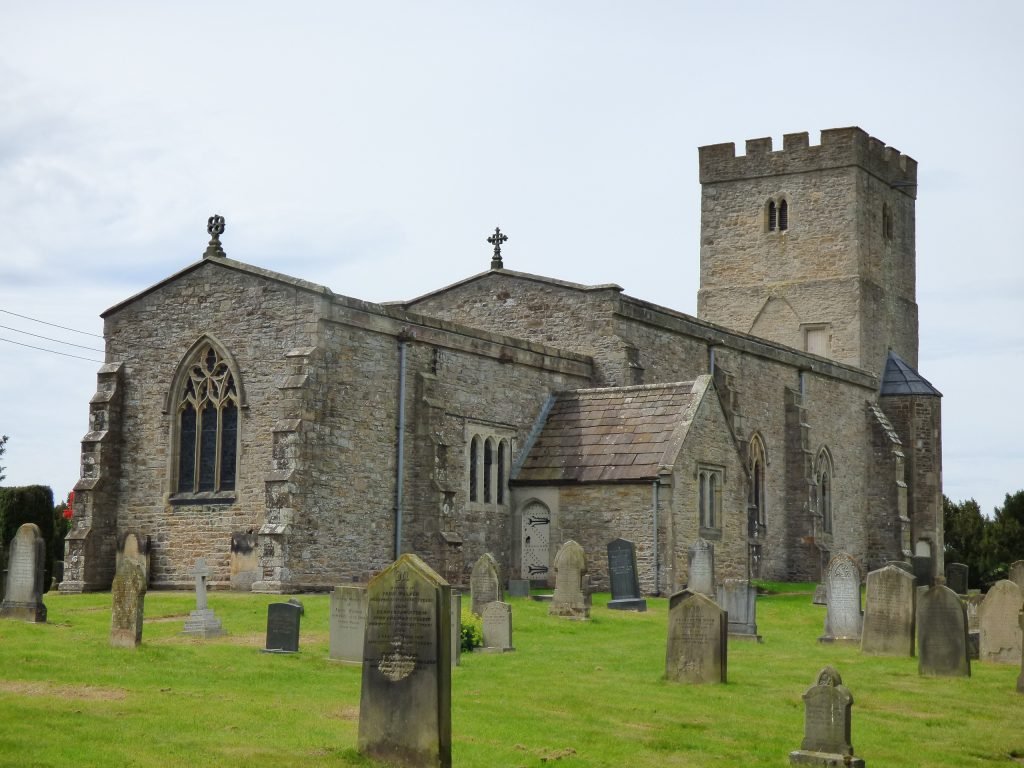
The church at Stanwick sits very close to the original centre of the Iron Age fort. It's churchyard seems to respect a more ancient ritual use and it's siting in conjunction with not only Mary Wild Beck but also the Sacred Spring in at the front of this church and it's 10th century origins indicate...
Earthworks at the top of Holly Hill, Well
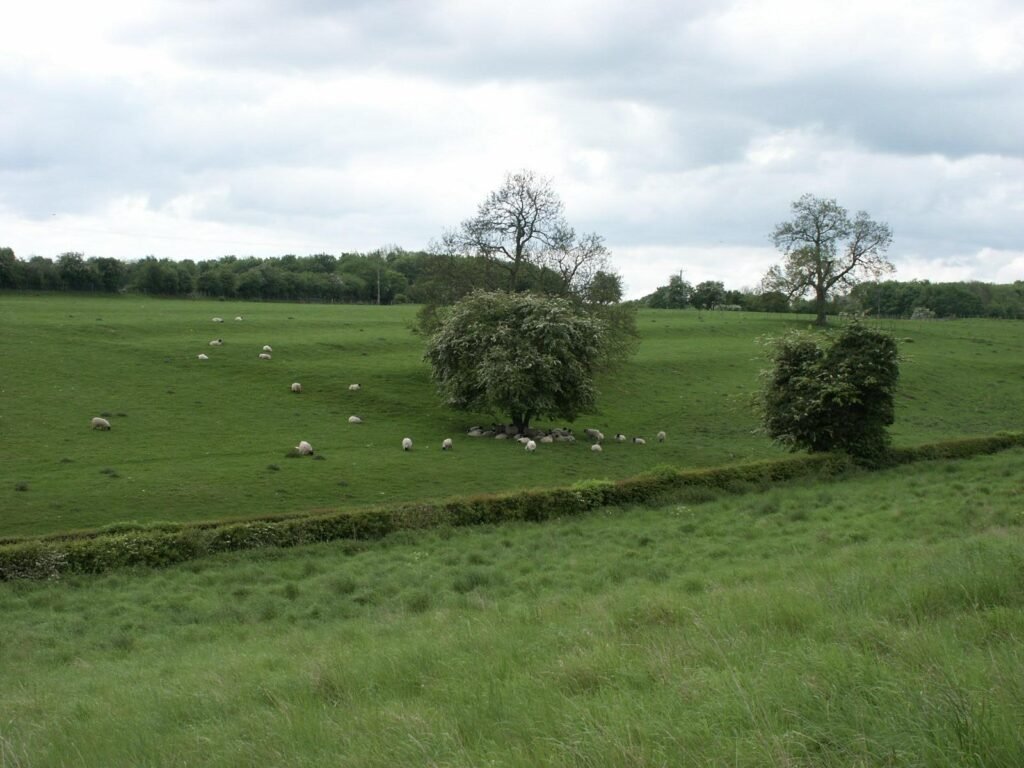
While details about these earthworks are not widely documented, the area is known for its rich archaeological significance. Holly Hill itself is a place of interest, with its Grade II listed status indicating its historical importance.
Cobscar Smelting Mill Chimney, Redmire, Wensleydale

The tall chimney on the moor near Redmire is connected to the Cobscar Smelting Mill, which was part of the lead mining industry that once thrived in the area. The chimney served a crucial role in the smelting process by exhausting poisonous lead gases away from the mill.
St Cuthberts Church Forcett

Whilst the current church lacks much in the way of indications of ancient origins, it's entry porch boasts a wealth of 12c carved stones and is definitely worth a visit.
Scotts Dyke – Richmond
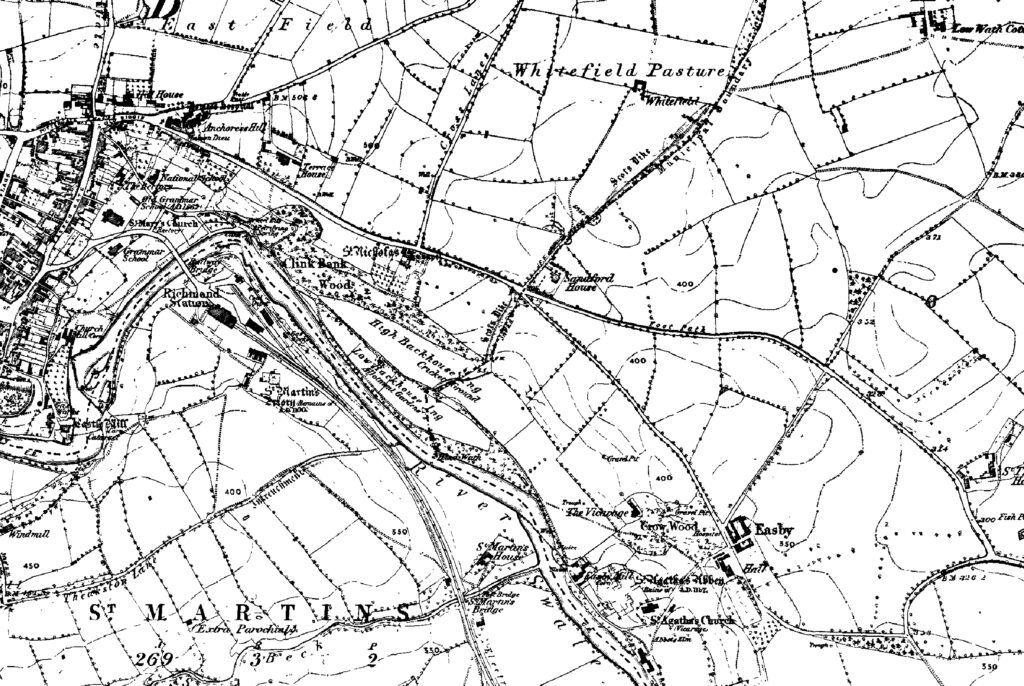
Scott's Dyke, also known as Scots Dyke or Scots Dike, is a significant linear earthwork stretching approximately fourteen kilometres from the River Swale to the River Tees, this ancient structure is believed to date back to the period between the first century BC and the first century AD.
Boltby Scar Iron Age Hill Fort

This Iron Age Hill Fort is mostly unrecorded and minimal information is available. A site visit is required to further understand the nature of the site. Note that both this, Roulston and Mam Tor have been dated at around 400BC.
Braithwaite Wood Fort, East Witton
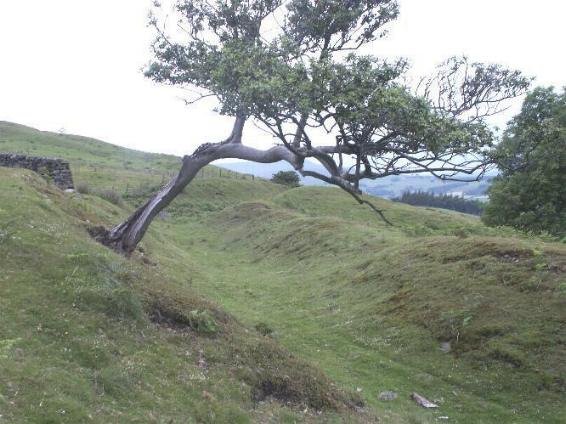
We call Braithwaite Wood Fort Iron Age, but it's actually undated, but its typology indicates a potential Iron Age origin.
The Rocket, Pepperpot and Gate Follies and sorrounding earthworks – West Witton
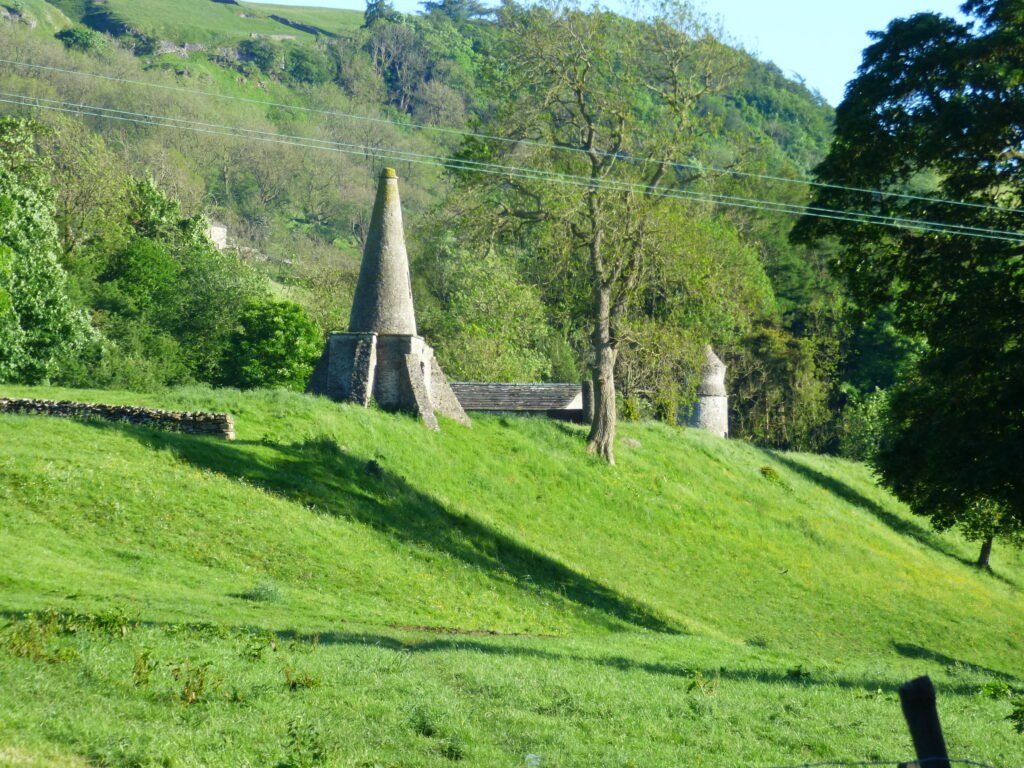
This area of Wensleydale has quite a significant number of follies, and not far from The Temple Folly, we have three more; a rocket ship, a giant pepper pot and a gate, or guillotine, and stand just over the road from Park Hall.
Sinderby Henge

Although all the existing literature assures us that the Great Henge Alignments of North Yorkshire are now covered by – The Langthorpe Earthwork, Cana Barn Henge, Nunwick Henge and Hutton Moor, finishing with the astounding triple Henge alignment at Thornborough, this may not necessarily be the case.
Snape Castle
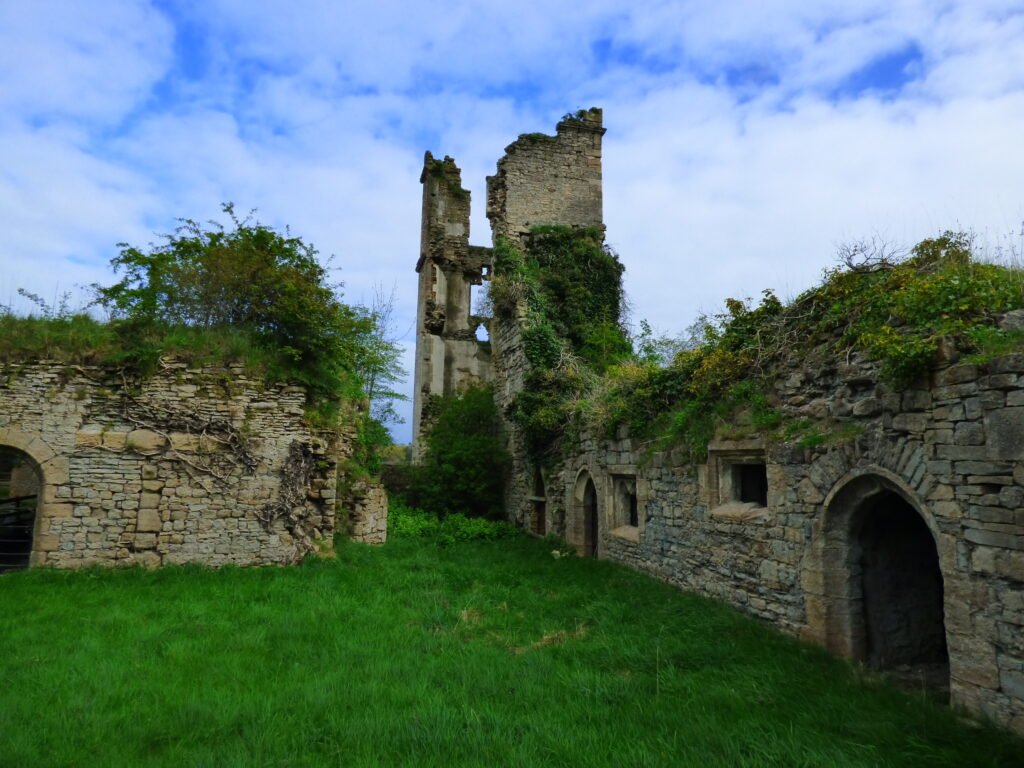
Snape Castle, located in North Yorkshire, played a pivotal role during this turbulent period. It was the residence of Catherine Parr, who would later become the sixth wife of King Henry VIII, and her husband, John Neville, 3rd Baron Latimer.
Rudston Standing Stone

Rudston is England's tallest Standing Stone and it's presence gave the name to the village that it's located in. It's presumed to be of Neolithic origin. It's just over 25ft high.
All Saints Church Rudston

All Saints Church in Rudston sits in the grounds of the famous Rudston Standing Stone, this alone clearly points to the area being of ritual use thousands of years before this Norman church was erected.
Maiden Castle Fort Reeth

For over five hundred years, the miners and smelters of Reeth produced mountains of precious lead. The lead ores from Reeth had high concentrations of Silver, Lead itself became and important ingredient in bronze. Maiden Castle, deep in the Swaledale lead mining territory a unique piece of Iron Age architecture. It is the only known...
Stanwick Hill Fort

Stanwick is very close to the Scotch Corner junction of the A1, close to Darlington. From Scotch Corner, take the A66 towards Barnard Castle for a couple of miles then take the right turn towards Forcett. The road will take you past part of the defences, at which point a left turn will take you...
Scorton Cursus
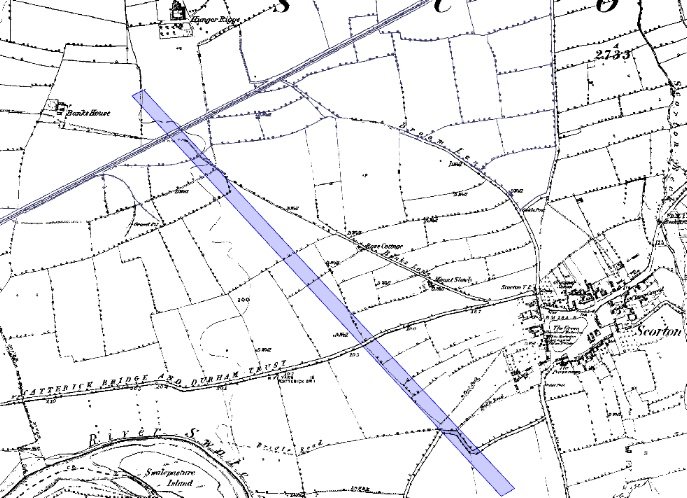
The cursus was originally about 2.1km long and aligned SE-NW. Clustered round the monument were a number of ring ditches, one that was excavated had a single burial with a beaker. This would date the site as being in use from around 3,500BC until at least the Bronze Age c.2,000 BC.
Roulston Scar Hill Fort
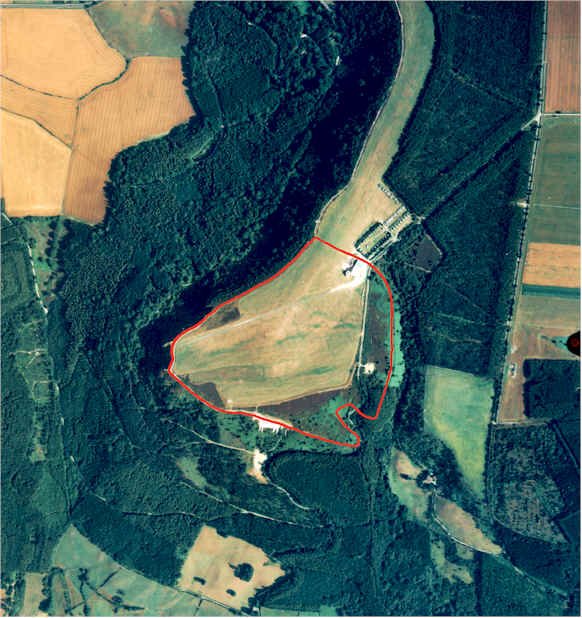
""We were shocked to discover such a huge complex," said Alastair Oswald, archaeological field investigator for English Heritage. Preliminary examinations of the remains suggest it was more than twice the size of most other prehistoric strongholds. Built of timber palisades and girdled by a 1.3 mile circuit of ramparts, 60 per cent of which are...
Staple Howe West Hesterton
This small farmstead was established on top of the small chalk hills on the northern edge of the Yorkshire Wolds.
Hutton Moor Henge

Hutton Moor Henge is almost identical the the henges at Thornborough and Nunwick. It's been proposed that these henges form part of a large scale ritual landscape created in the area, linked to the Rivers Ure and Warfe.
Kilgram Bridge Ford

Kilgram bridge itself is of known ancient construction, and is believed to date from the early 12th century - probably built around 1145 AD by the Cistercian Monks who founded Jervaulx Abbey nearby. Local myth tells how the bridge was built by the Devil after a pact made with the local population. Kilgram Bridge is...
Richmond, North Yorkshire
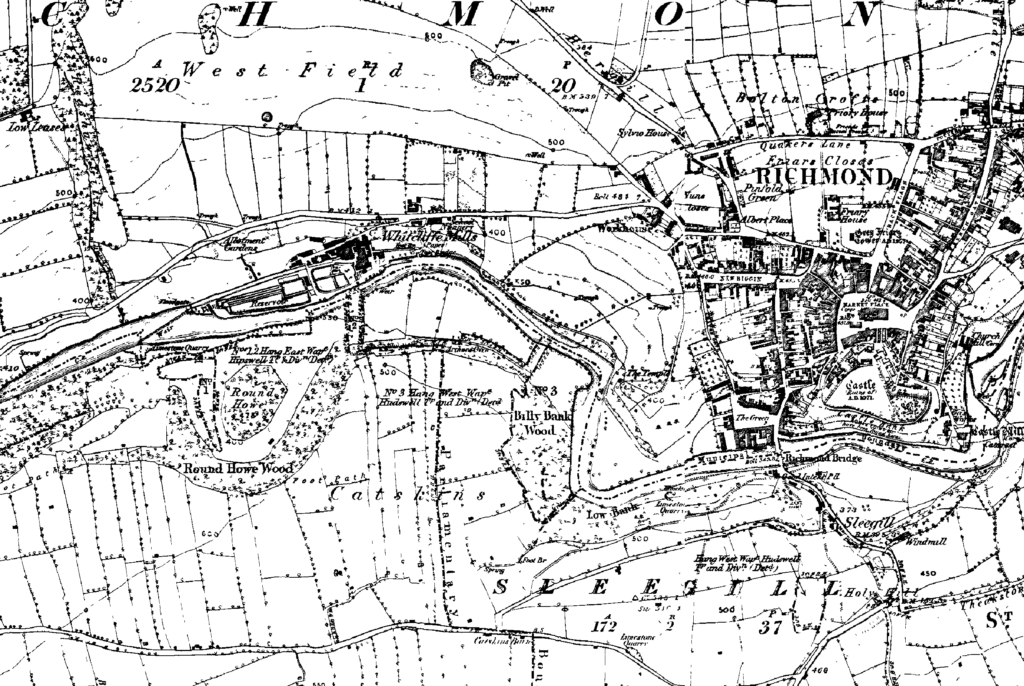
Richmond, a market town in North Yorkshire, England, boasts a rich history that dates back to the Norman Conquest of England. Founded in 1071 by Alan Rufus, a Breton nobleman, on lands granted by William the Conqueror, Richmond originally bore the name Hindrelag.
Bainbridge Camp – Hill Fort

The subject of much speculation and, frankly, little fact this looks like a classic hill fort to us, check out the below elevation map of the area with the hillfort showing up beautifully. We have also included elevation profiles so you, dear readers, can appreciate the classic hill top location: note how from all directions...
Kirklington Tumulus

"Prehistoric vessels dug out of the mound at Stapely Hill, Kirklington, in 1903. Fragments of several pottery urns of the Bronze Age, C. 1,000 B.C., one containing cremated human bones" Description and photo's from Kirklington Church.
Live Moor Hill Fort
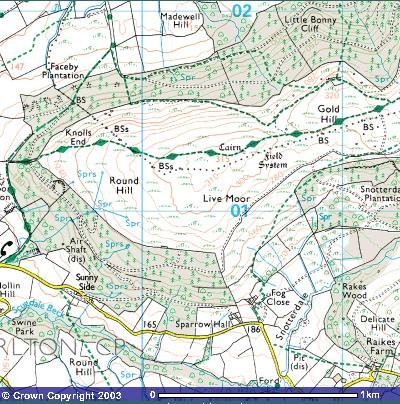
"Whorlton, Live Moor, (NZ 496012) A previously unrecorded promontory fort was identified by D. Smith on air photographs and later surveyed by him and G. W. Goodall. A single rampart with external ditch extends across the west-facing spur of Live Moor to enclose an area of approximately 2 acres known as Knolls End.
Bainbridge Roman Fort
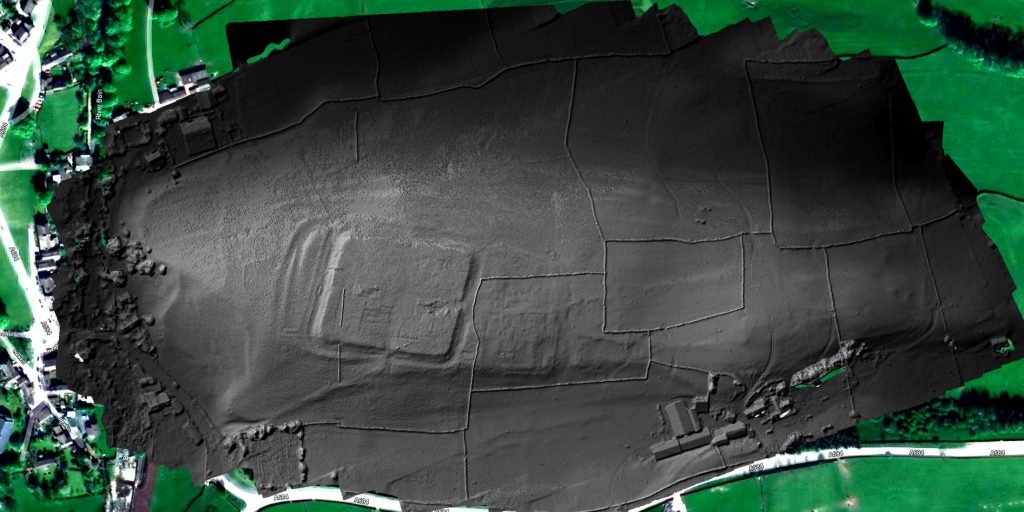
Particularly of note is the multiple defense ditches to the west, the extension of the entire fort to the east and the well defined entranceway to the south (other entrances are available)But the real stunner is the 2 interior shots: firstly the interior of the classic fort itself where we have a road coming in...
Near Moor
At SE48090 98917 this Neolithic Pointer lay’s close to a Bronze Age Field System. I have explored this area several times and find that much more time is needed as it is a vast area called Near Moor and was due in pre-history connected to Scratch Wood Moor to the north west.
Pickhill Mound
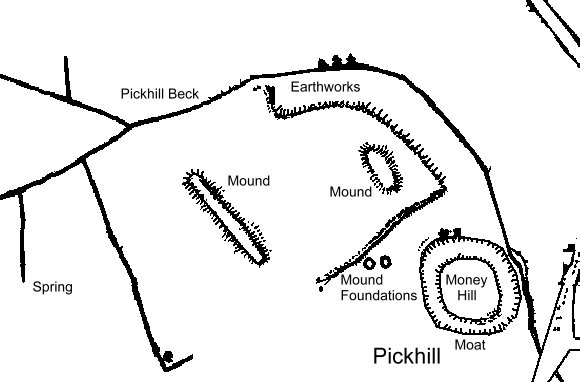
A large artificial mound here, apparently raised for defensive purposes, bears the name of Picts' Hill, and an improbable belief prevails that the Picts defeated the Romans in battle at a spot, not far off, called Roman Castle. This mound is also known as Money Hill, but, though partially cut away for the construction of...
Thornborough Henges
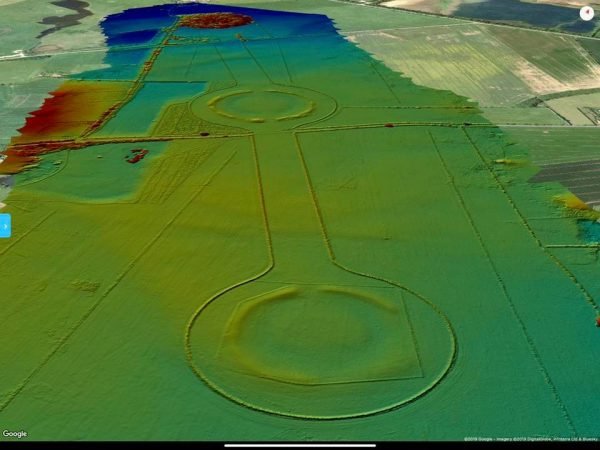
A site that spans several thousands of years from the Stone Age to at least the Iron Age, the ancient people of the area built one of Britain's largest ancient sites in Yorkshire, in what was to become the heart of Brigantia.
Site Gallery
Gallery Empty


